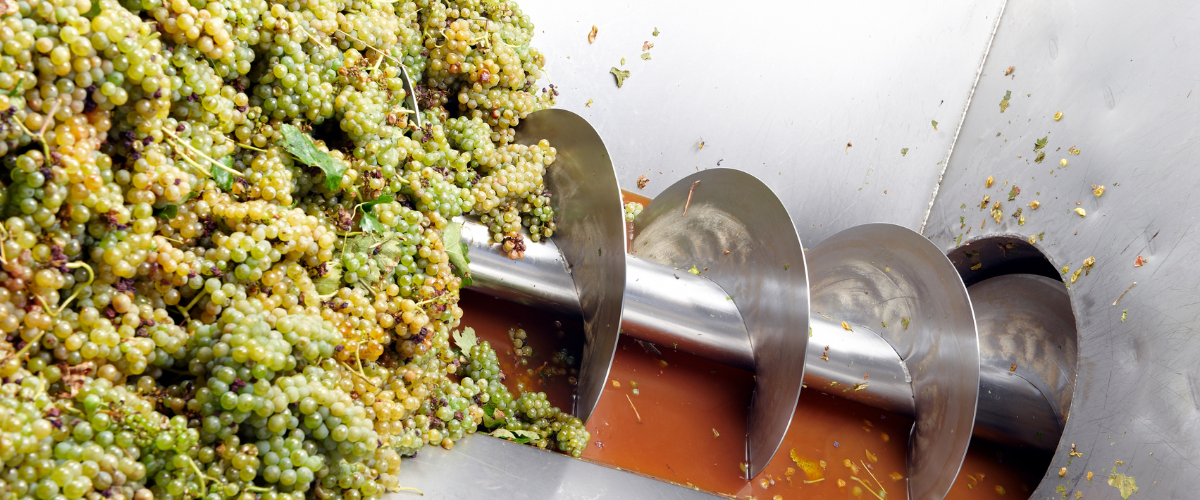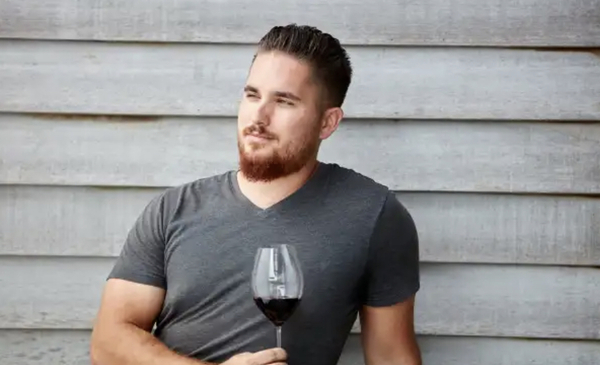Drinking with the One Per Cent

A little dab’ll do ya. The art, history, and logic of blending wine.
By Erin Henderson
Years ago, I was at Stratus Vineyard’s annual tasting in Toronto.
Stratus, a premier winery in Niagara-on-the-Lake, famously focuses on blended wines. Their flagship wines, “White” and “Red” change recipes every year based on what grapes suit the style best, but it’s not uncommon to see a two per cent splash of this, or a five per cent splash of that in the final wine.
At this particular tasting, I believe we were tasting the 2012 Red, which is made up of six or seven different red grapes. Among them, Petit Verdot topped off two per cent of the assemblage.
Another wine journalist at the luncheon asked founding winemaker, JL Groux, what the two per cent actually did for the wine.
Always the charmer, JL, in his heavily-accented French, modestly threw his hands in the air and joked, “I don’t know!”
But of course, he knew.
You may also like: What Happens in a Vineyard in Winter
“These small percentages really do mean something,” says Dean Stoyka, Stratus head winemaker. “Winemakers blend to take advantage of the differences in each grape to make a superior blend, so it checks all the boxes: balance, acidity, colour, mouthfeel, aromatics.”
Dean, who has an uncanny ability to explain complex winemaking techniques in accessible terms to the basic oenophile, likened blending to a sports team. Ideally, a coach will assemble a group of people with complimentary skills – some can shoot, others can play defence, a few have terrific speed. Meanwhile, a team that’s made up of a bunch of players with the same talents end up with a subpar lineup, no matter how brilliant the individual athletes.
“Winemakers take different qualities and attributes (of grapes) to make a superior wine.”

So what about that measley two percent of Petit Verdot in Stratus Red? Dean says some grapes, like Petit Verdot, are powerful enough on their own that a lot isn’t needed to affect the final blend. Petit Verdot, one of the supporting grapes of Bordeaux and Bordeaux-styled wines, such as Stratus Red, is used for colour and tannin structure, and the seemingly small difference between two per cent, five per cent, or 10 per cent can completely change the texture and perception of the wine.
Another example, says Dean, is Gewürztraminer, a heavily aromatic grape that at two percent can add a pretty floral note, but at four per cent, can easily dominate the blend.
And take the French lovers of Merlot and Cabernet Sauvignon. You could consider this classic grape pairing the Fred Astaire and Ginger Rogers, the Joe DiMaggio and Marilyn Munroe, the Bennifer of wine for how well they go together.
"Merlot has a soft tannic structure and Cab Sauv is a bigger, bolder wine," Dean explains. "You add the Merlot to soften the Cab without losing the beautiful aromatics of the Cabernet Sauvignon. Merlot, compared to Cab, isn't as aromatic. At the end of the day, the most important thing is you're trying to find grapes that work well together."
You may also like: How Wine Gets its Flavour
However, not all grapes make good bedfellows. Years ago, Dean says Stratus experimented with adding Riesling to the White blend. But Riesling's intense phenolics and aromas of petrol and fruit, proved to be better as a single varietal wine.
"Both styles (single and blended) have their place," Dean concedes.
Wine enthusiasts can be forgiven for assuming single varietal wine is better than blends. One culprit for dulling the shine of blended wines could be attributed to large-scale, mass production. Huge commercial wineries can pump out millions of litres of blended wines every year for extremely cheap. The wineries source simple, bulk grapes or juice from all over the world, and turn it around quickly, simply, and effectively. There’s nothing inherently wrong with this style of wine, but they’re not particularly interesting – nor do they aim to be.
It's also helpful to know what you're getting, and single varietal can go a long way to soothe a nervous wine buyer.
"If you know Chardonnay, Pinot Noir, or Cabernet Sauvignon, you know the flavour you like and you really don't want to go outside your known varieties to a blend because it's unpredictable what you're going to get," says Dean.
But for adventurous wine lovers, rewards abound.
“Some of the most incredible wines in the world – Chianti, Northern Rhône, Châteauneuf-du-Pape – have blended for hundreds of years to make amazing wines.” Dean points out.
Other notable regions that rely on blending include: Champagne (Pinot Noir, Chardonnay, and Pinot Meunier), Bordeaux (Cabernet Sauvignon, Cabernet Franc, and Merlot), Super Tuscans (French grapes often blended with Sangiovese), and, as Dean mentioned, France’s Rhône Valley; in the north, spicy Syrah is often blended with floral Viognier, and in the south, Châteauneuf-du-Pape famously allows for a blend of up to 13 different white and red grapes.
Several European wine regions blend a bit of white wine into their reds to soften a muscular red, and loan a fresh liveliness.
“It’s practised a lot on Portugal to combat climate change and the over-ripeness in the vineyard because of the heat,” Dean says. “Adding a white wine with a little more freshness or a little higher acidity, can work much better than adding acid or winemaking chemicals. So I think (blending red and white wines) is a great idea.”
Stratus wines are available on occassion at the LCBO in Ontario, or can be ordered from stratuswines.com with free shipping in Ontario for orders of six bottles or more.
